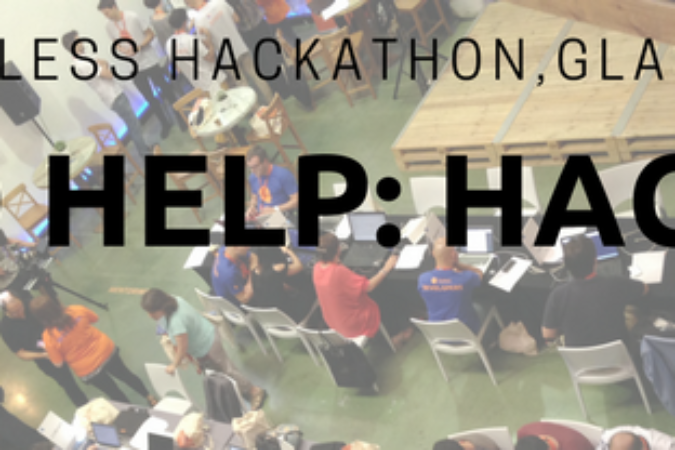Employee Surveys Suck. We all know it but why persist with them?
The purpose of an organisational survey carried out by an HR department is to understand what employees and managers are thinking and feeling and to identify any positive or negative issues with the aim of improving the organisation as a whole.
The process should be carried out quickly and fluidly so that problems are addressed or positives praised in a timely fashion.
However, many organisations still use old fashioned ways of researching, such as handing out a paper survey, sending out a survey that is too long, or trying to create a survey from scratch on email.
These take time and, in too many cases, managers process information long after problems have spread, causing frustration amongst employees and limiting the effect of any improvements that could be made. The length of time it takes for a survey to be carried out and analysed using traditional ways may result in managers failing to facilitate the growth and capitalise upon some positive events within the organisation that need structural support. In either case, long correction cycles in human resources can be rectified.
However, before the problem is sorted out, we should look at the problems with some methods of collating feedback within organisations and how this compares with online tools.
Paper and pencil
Distribution and collection: let’s assume that the manager leaves a survey in the snail mailboxes of 400 people (rather than visiting each person at his or her desk). Identifying the appropriate boxes out of, say, the 500 available could take 30 minutes. Once the surveys have been completed, let’s assume these people take five minutes to put them back in the manager’s mailbox. At 400 people, that’s 4,000 minutes of company time—nearly 68 hours.
Collating and data entry: a 10-minute questionnaire contains on average 30 questions. After an initial 30 minute set up, the answers can be entered into a spreadsheet at a rate of about four per minute if the person has a colleague read the answers aloud, although this slows to about two per minute when entering surveys alone). In either case, this would take around four hours of company time to enter.
Analysis: to merely check the frequencies of each variable would take at least 30 minutes for a relatively advanced spreadsheet or statistical software user. The data would then need to be filtered and compared against other variables of interest for example, demographics which would take another couple minutes per analysis of interest. At this point we’ve used up nearly a full working week’s worth of time to simply distribute and collect data.
Many organisations are still using the internal email system to write a survey from scratch, send it out to employees and then collate the data from the emails one at a time.
Distribution and collection: once you have collected all the email addresses emailing 400 people would only take a few minutes.
Collating and data entry: in most circumstances the manager would have to read handwritten responses in email and convert them to a number which would be entered into a spreadsheet. This process would take considerably more time than reading (or listening to) numbers from a paper questionnaire. Conservatively this would take 33% more time, another 10 hours. Moreover, the process of sorting, clicking and scrolling through emails in outlook would take another three seconds or so per email, which adds another half hour to the process. Has anyone ever emailed their manager or CEO to give them real feedback?
Analysis: running simple frequencies would take at least 30 minutes in a classic spreadsheet based programme.
Online survey tools
Online tools like SurveyMonkey allow managers to distribute, collect and analyse data online. Total time to carry out a survey will vary depending on factors such as length of the survey, complexity of the survey logic, familiarity with online tools, and proficiency on the part of respondents. The most notable advantage of online tools is the elimination of redundant and manual processes along each step of the process.
Distribution and collection: online survey tools enable HR managers to easily distribute surveys in a variety of ways: by emailing a survey link, by posting a link on an internal intranet, or by embedding the survey on a company blog or website. By using the SurveyMonkey email collection method, managers can also easily see who has completed a survey and who might need a gentle reminder.
Collating and analysis: responses collected by the online survey tools are usually automatically collated and HR managers can filter responses by department, by employee tenure, or any other key factors to understand any potential differences that drive variations in responses. Data can also be easily downloaded into Excel or in data files that are compatible with other analytical programs.
nooQ it
Survey tools are indeed a step forward but they can still be vastly improved. The questions asked in in a survey are fixed.
If an employer does not want to hear an answer they know they won’t like, they wont ask the question.
Issues are easily avoided or swept under the carpet. Whoever designs the survey has all the power. Surveys are question and answer, employee to HR, one to one. What this needs is a conversation, between everyone. Usually what happens is HR release the survey results, once they have sanitised the comments and massaged the figures. You’re a smart cookie, we all know what stories you can tell with stats and 98.43% are lies.
Why not have a grown-up adult conversation about it.
Not in one, three or six months time which is what it will take for HR to design the survey, approve the questions, communicate how to complete it and massage sorry communicate the results. nooQ it now. Have the conversation in real-time, right now. Ask questions, get replies and comments back. If you don’t ask the questions, your employees will raise them. You will maybe hear some things you don’t like, but its far better to know about them now and do something about it, than get the survey results six months later only then to start a task force to address them. It’s the equivalent of fixing a flooding bathroom, six months late and expecting a glowing customer feedback appraisal for fixing it.
Distribution: Everyone is on-line and connected in real-time
Collection and Analysis: Real-time, live results that everyone can see instantly as the results come in. Results in seconds and minutes, not weeks and months. Do short regular pulse checks regularly throughout the year. At nooQ we do it on-line every day but also back it up during the weekly scrum meeting face to face where everyone is encouraged to say what excites them and what could be improved.
Real-time conversations like Twitter are everywhere, only their benefit is not being seen in the workplace. That quick and honest feedback enables a business to react to changes in its culture.
It is the digital equivalent of getting being able to walk the shop floor and speak to every single employee, everyday even when you have 10,000 employees. You couldn’t imagine doing that, before. Now you can.
The productivity and efficiency gained through a happy and empowered workforce are invaluable.
Tweet us your suggestions or staff survey horror stories @nooqsoftware #staffsurveyssuck








